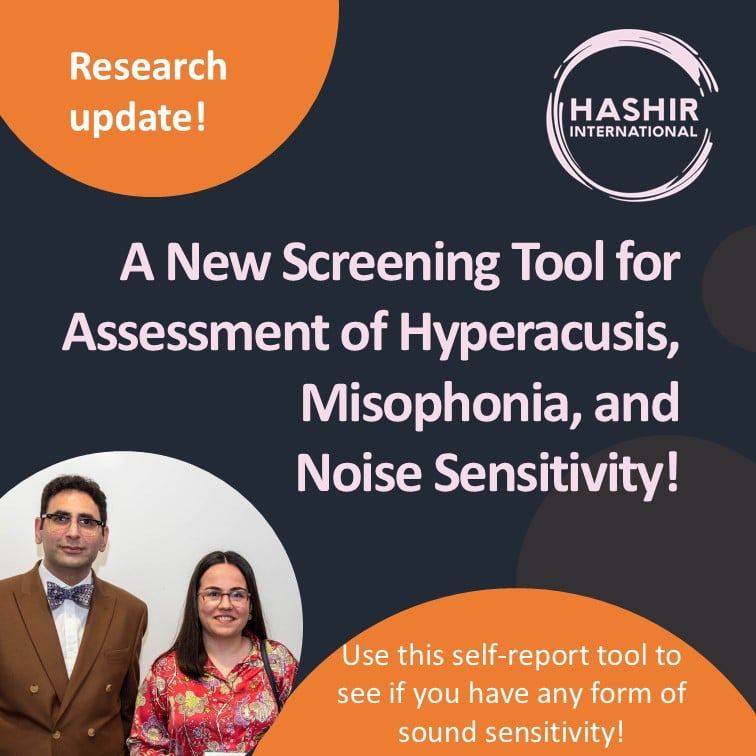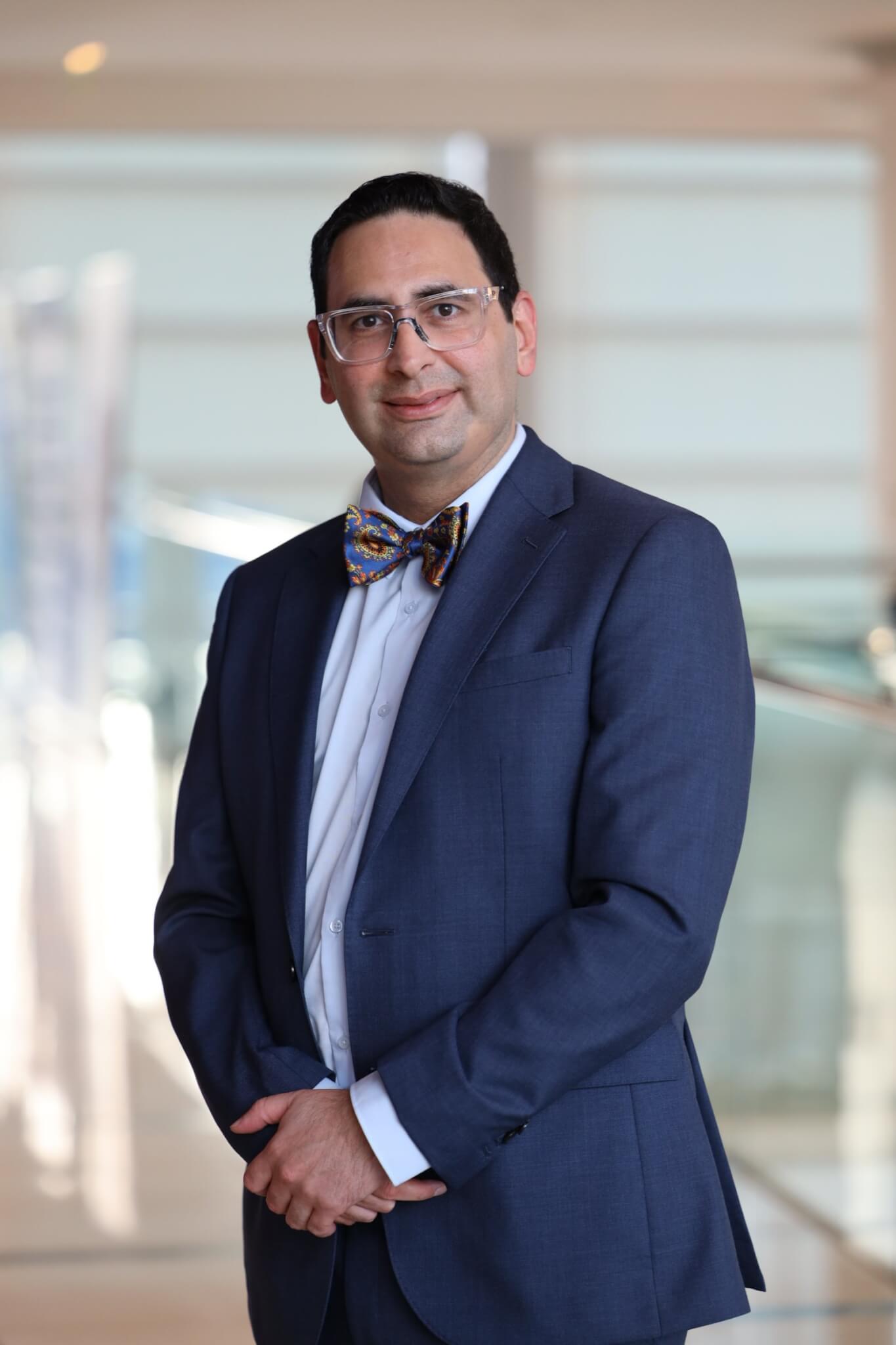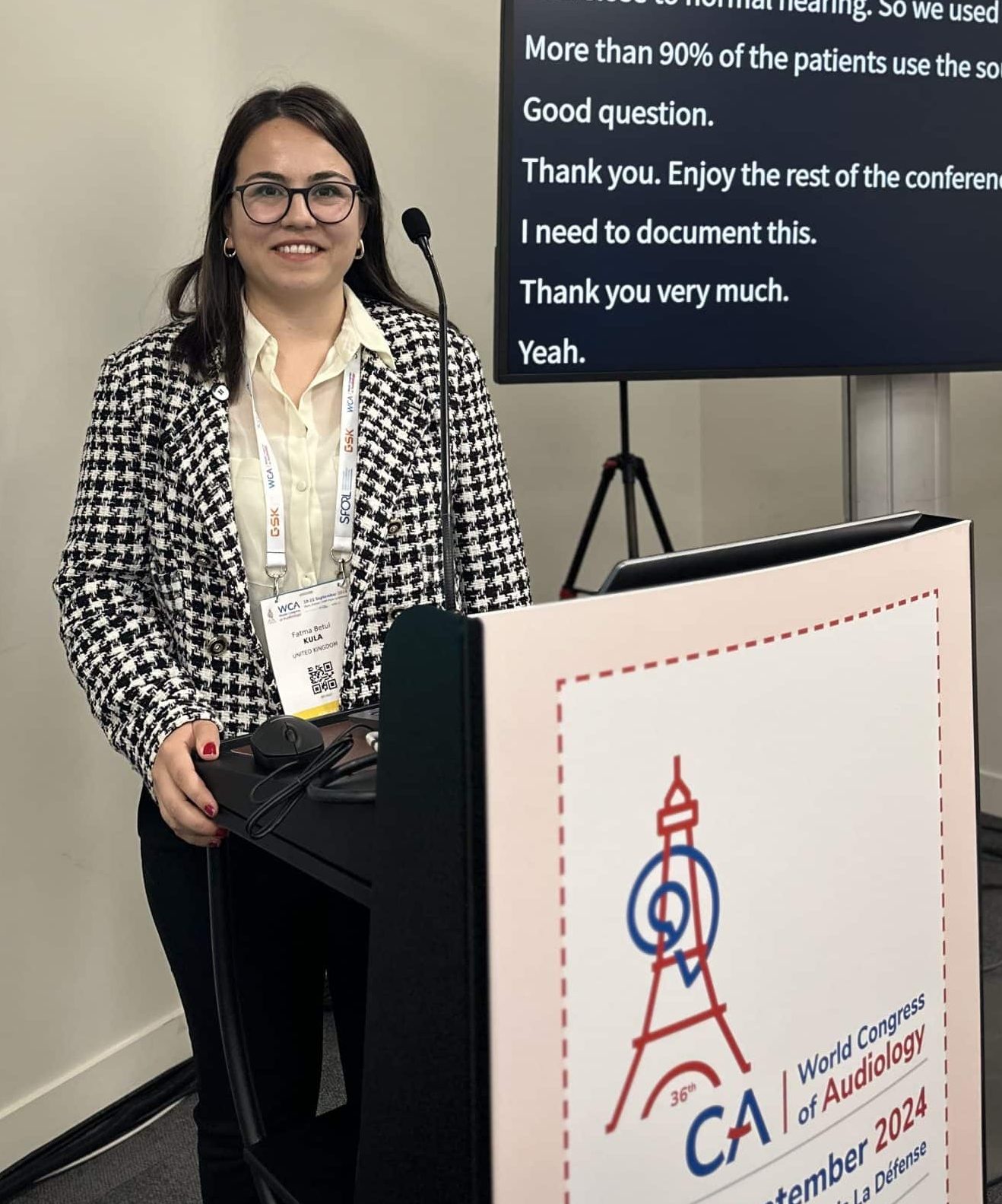
The second version of the Sound Sensitivity Symptoms Questionnaire (SSSQ2) has been launched following positive outcome reported in a research study assessing its validity, reliability and the minimum detectable change in scores. This questionnaire is freely available for professionals as well as members of the public to use as a measure for severity of sound sensitivity symptoms in general (based on its total score) and as a checklist to screen different forms of sound sensitivity. Click on the relevant links to access the SSSQ2 (adult version) and the SSSQ2 (parent version- for children under the age of 10 years old).
This questionnaire has been developed by the multi-disciplinary team of researchers and clinicians at Hashir International Institute and is the first validated tool that can reliably differentiate various types of sound sensitivity. The recent research on SSSQ2 in the general population was conducted as a part of our PhD student’s project, Fatma B. Kula, at the University of Surrey. Click here to read the full report of this research.
Our director, Dr Hashir Aazh said:

“Fatma has done a great job in conducting this study. The SSSQ2 is a brief questionnaire with 6 items that assesses the severity of symptoms for several types of sound sensitivity over a two weeks period. The SSSQ2 can be used for two purposes comprising (1) assessing the severity of sound sensitivity symptoms in general and (2) differentiating different forms of sound sensitivity. The sum of items 1, 2, 3 and 5 is relevant to hyperacusis in general (a combination of loudness, pain and fear hyperacusis), and the sum of items 1 and 3 assesses loudness hyperacusis. Item 2 assesses presence of pain hyperacusis. Item 4 asks about misophonia. Item 5 asks about fear hyperacusis and item 6 asks about noise sensitivity.”
The study reports that the SSSQ2 can also be used to assess the change in severity of sound sensitivity symptoms before and after a treatment such cognitive behavioural therapy (CBT). To read more about CBT for sound sensitivity click here. The minimum amount of change in the questionnaire’s scores that constitutes a true change in sound sensitivity is ≥5 for the total SSSQ2 score, ≥4 for general hyperacusis (the sum of items 1, 2, 3, and 5), ≥3 for loudness hyperacusis (sum of items 1 and 3), and ≥2 for pain hyperacusis (item 2), misophonia (item 4), fear hyperacusis (item 5), and noise sensitivity (item 6).
Fatma B. Kula, PhD student, adds:

“Our results showed that the SSSQ2 can be used to assess sound sensitivity symptoms encompassing various forms of hyperacusis, misophonia, and noise sensitivity. The score of the SSSQ2 is highly correlated with the scores of other hyperacusis and misophonia questionnaires and is not related to the measures of hearing loss. We do not think that hyperacusis and misophonia are related to hearing thresholds. It seems that people with misophonia may also experience symptoms of hyperacusis and noise sensitivity. Pain hyperacusis was the least prevalent symptom while noise sensitivity and misophonia were the most prevalent in our sample. Previous studies are in agreement with our results suggesting a significant overlap between symptoms of various forms of hyperacusis, misophonia, and noise sensitivity. Future research should further explore the performance of children’s version of the SSSQ2 which is a proxy measure completed by parents of children of less than 10 years old.”
For further information, please contact:
Hashir International Institute, 167-169 Great Portland Street, 5th Floor, London, W1W 5PF
Hashir International Institute, 54 Quarry Street, Guildford. GU1 3UA
admin@hashirtinnitusclinic.com
About Hashir International Institute:
Hashir International is an independent research institute and treatment centre dedicated to improving the diagnostic process and rehabilitation programs for patients experiencing misophonia, tinnitus and hyperacusis. They offer specialist training courses, ethical review of research proposals, research design, research sponsorship, and supervising MSc and PhD students.